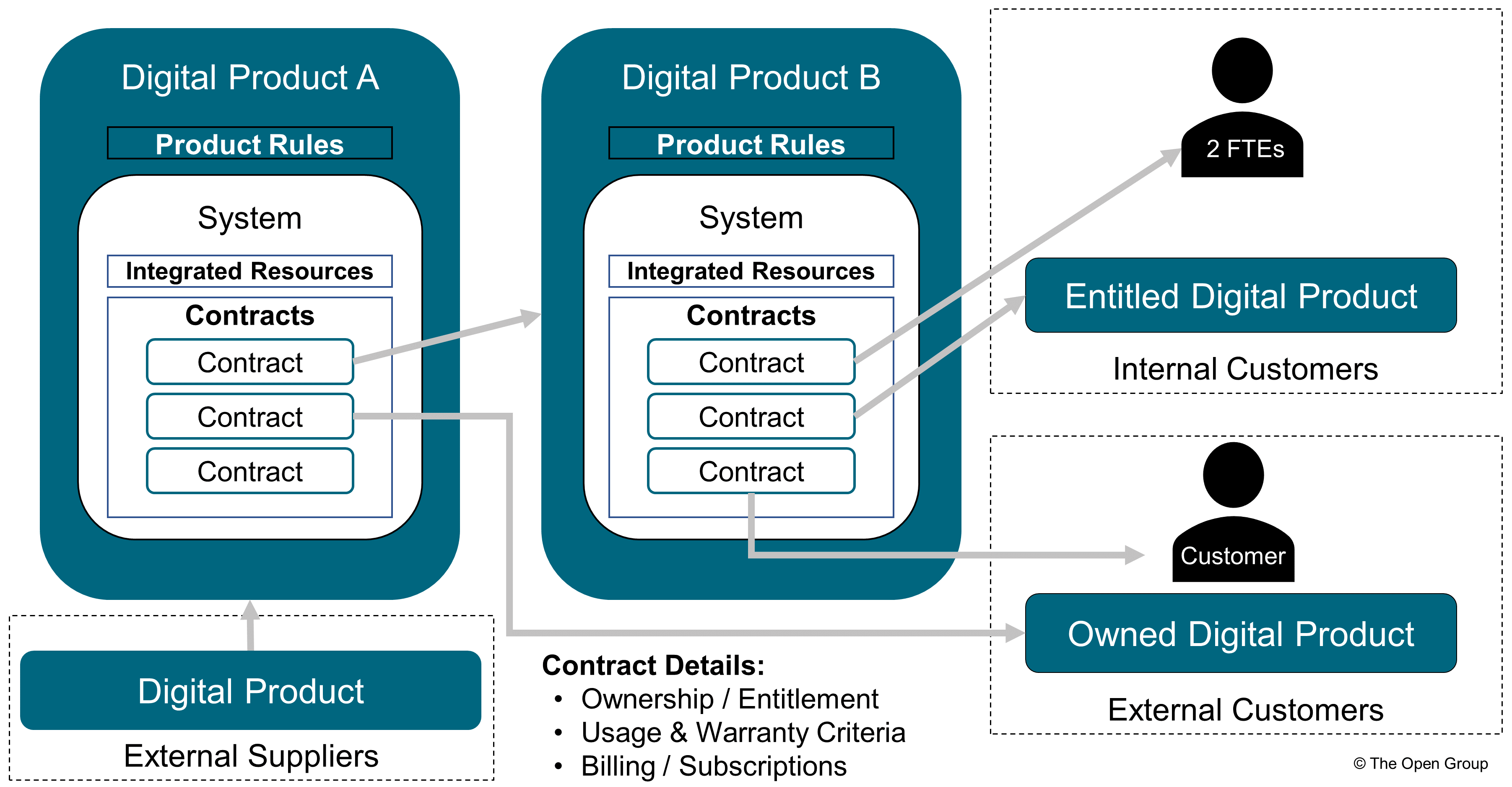Complex Digital Product Systems
As mentioned above, the resources within the system may include contracts to use other internal or external Digital Products, with both technical and financial dependencies. These third-party dependencies and their explicit or implied contracts are an integral part of product definition, and a consideration in pricing and other management concerns.
Typical Contractual Mesh Among Digital Products shows a more complex view of the possible dependency mesh of a Digital Product.

When more elaborate Digital Product systems are deployed and connected using Service Management models such as ITIL®, some resources can be managed as Configuration Items (CIs), representing the system’s underlying and integrated resources. Each CI represents a device or software object (such as an executable file for an application, operating system) that is discoverable when active on the enterprise network, or that has been manually recorded.
A Configuration Management Database (CMDB) is used by most large organizations to manage a subset of possible CIs that has been defined as interesting for management of the IT landscape. Discovery tools or manual data entry are used to capture and update CI information.
More sophisticated CMDBs and CMDB users are able to aggregate individual CIs into a data set that represents more complex and interesting management objects, such as licensed software instances, in-house applications recognizable with, for example, a “signature”. A challenge for Digital Product Management is to define the extent to which the Digital Product footprint can or should be recorded using an extended CMDB metamodel.
For example, it may be sensible for each instance of a Digital Product found in the CMDB to include a foreign key pointing to the Subscription record created at instantiation, or to the consumer represented by that record. This or some other mechanism should enable system resources identified in the Configuration functional component to be traceable to those consumers, their Service Contracts, and Subscriptions.
As suggested in Typical Contractual Mesh Among Digital Products, interaction among collaborating Digital Products, through Service Contracts and Subscriptions, pertains to both human and machine interfaces, entitlements, ownership, and access to systems.
Underlying code executes within interconnected systems to complete interactions for consumers, and may involve external suppliers as well.